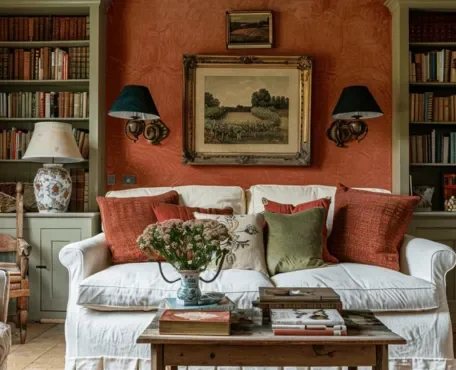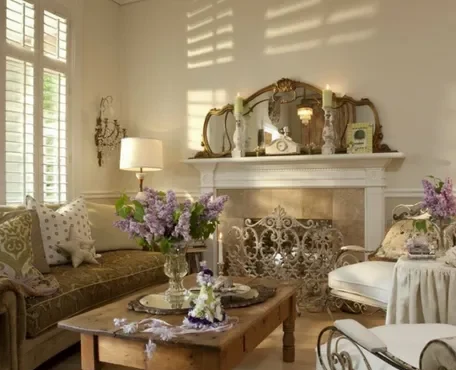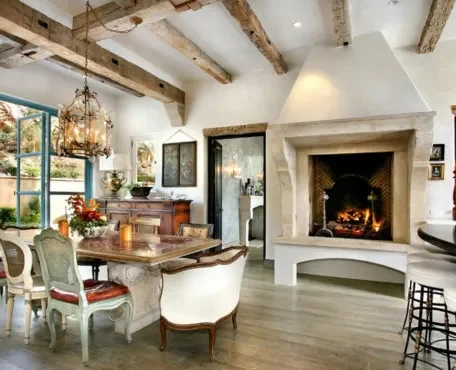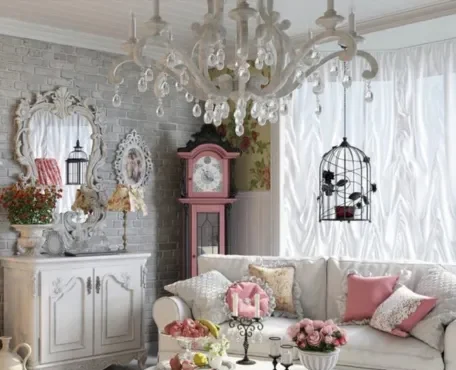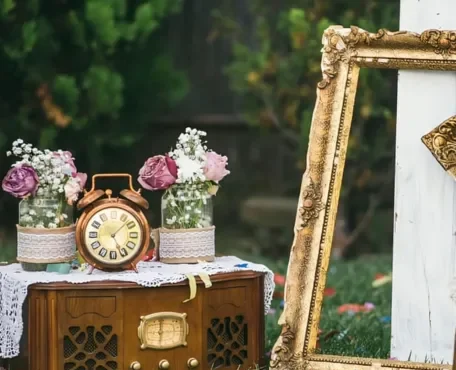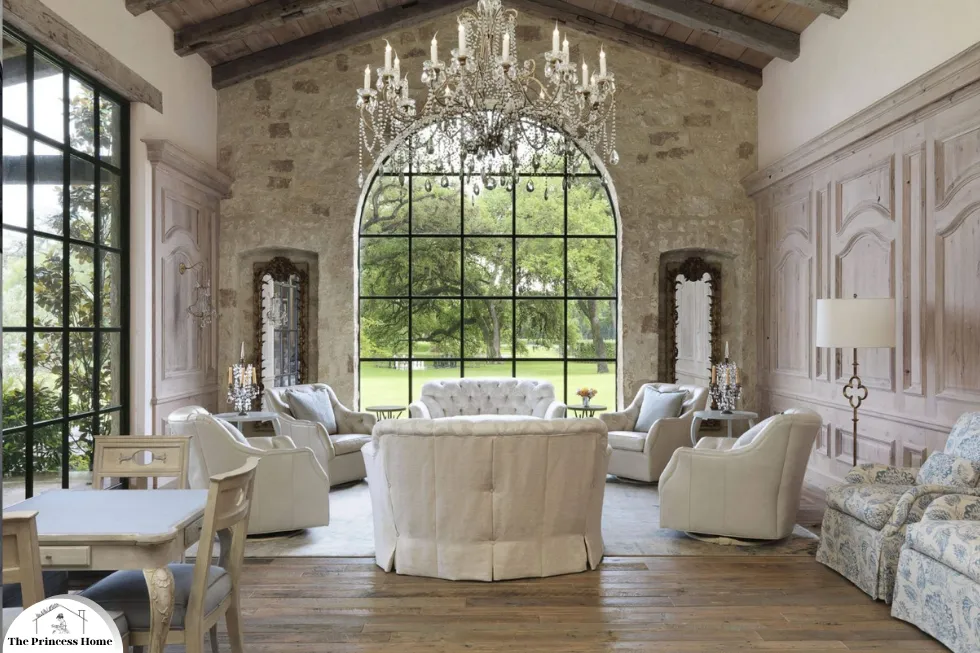
Provence style interior design, inspired by the picturesque region of southeastern France, embodies a unique blend of rustic elegance and refined sophistication. Rooted in the serene landscapes and rich cultural heritage of Provence, this design aesthetic captures the essence of countryside living with its emphasis on natural materials, soft colors, and vintage accents.
In this article let’s learn about the appeal of Provence style.
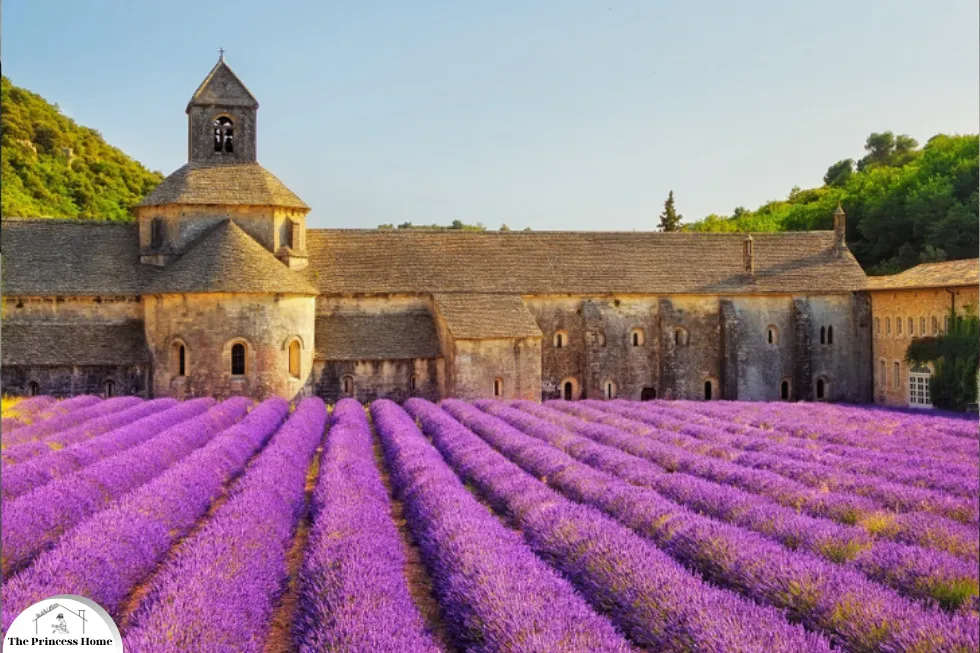
The Essence of Provence Style:
Provence style interior design is inspired by the rustic charm and serene beauty of the Provence region in southeastern France. It’s characterized by a mix of elegance and simplicity, creating a warm and inviting atmosphere that reflects the laid-back lifestyle of the countryside. Here are some key elements of Provence style interior design.
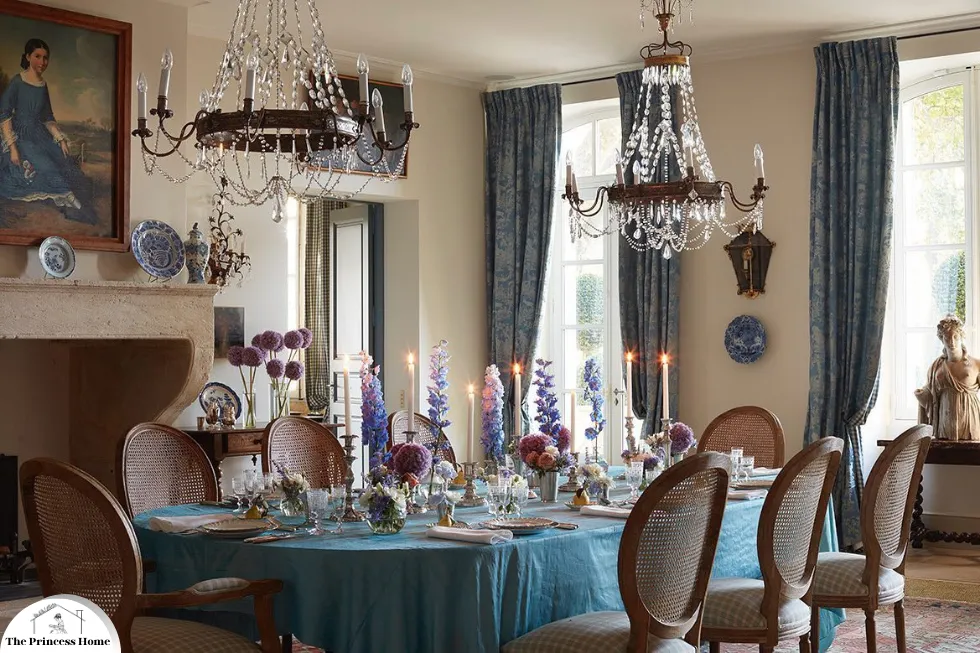
**Provence style timeless elegance**
Provence style holds a timeless appeal that transcends trends and fads, making it a perennial favorite among interior design enthusiasts. This style embodies a timeless elegance that never goes out of fashion. Its emphasis on classic silhouettes, natural materials, and soft colors creates interiors that feel warm, inviting, and effortlessly chic. Timeless elegance is at the core of Provence style, infusing interiors with a sense of grace, sophistication, and enduring beauty.
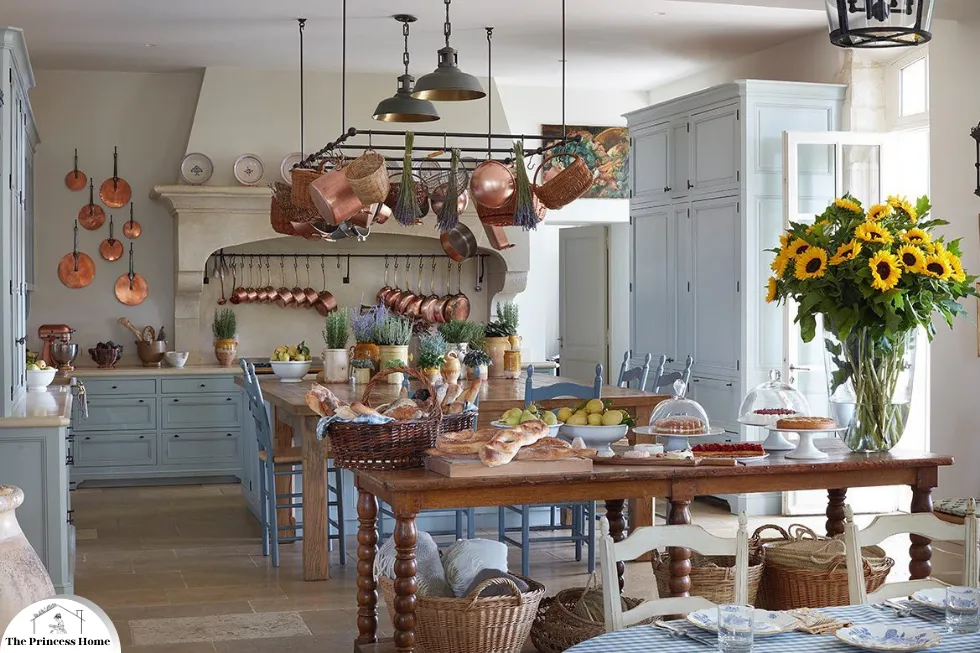
**Integration of Outdoor Spaces**
Provence-style interiors often blur the boundaries between indoor and outdoor spaces, creating a seamless transition between the two. French doors, large windows, and outdoor living areas maximize natural light and offer sweeping views of the Provencal countryside.
This integration of outdoor spaces fosters a connection to nature, inviting occupants to immerse themselves in the beauty and tranquility of the surroundings. The integration of outdoor spaces is indeed a hallmark of Provence-style interiors, enhancing the sense of tranquility and connection to nature.
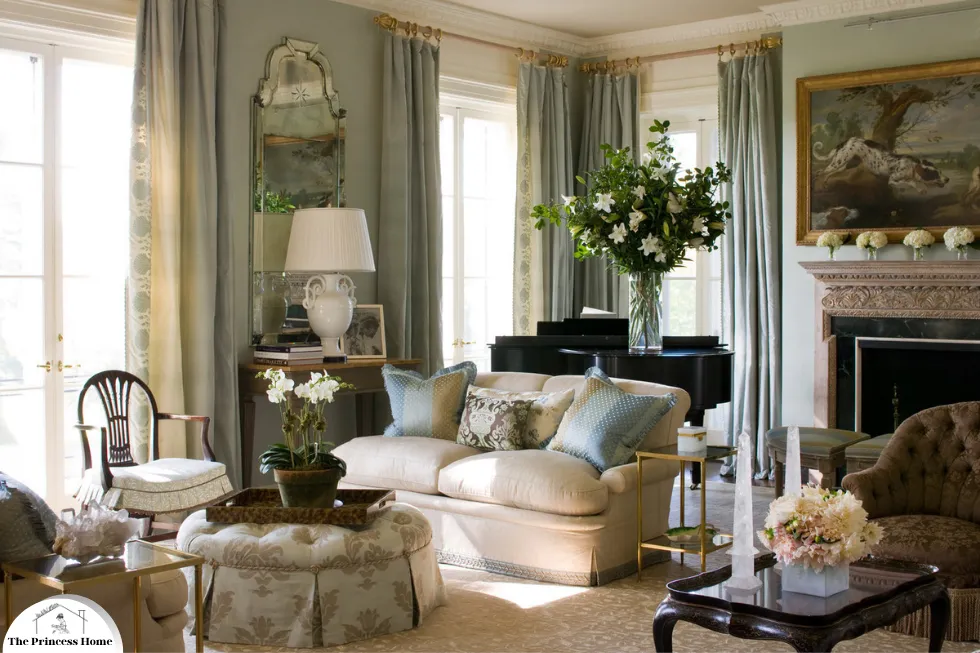
**Comfort &Relaxation**
At its core, Provence style is about creating spaces that are as comfortable as they are beautiful. Soft textiles, plush furnishings, and soothing color palettes combine to create interiors that invite relaxation and rejuvenation, making them the perfect retreat from the hustle and bustle of modern life. Comfort and relaxation are central to the essence of Provence style, creating interiors that offer both visual appeal and a sense of tranquility.
Provence style indeed encapsulates a serene ambiance that prioritizes comfort and relaxation. Soft textiles, plush furnishings, and calming color palettes contribute to this inviting atmosphere, making Provence-inspired spaces ideal for unwinding and rejuvenating.
In this article let’s learn about the appeal of Provence style.
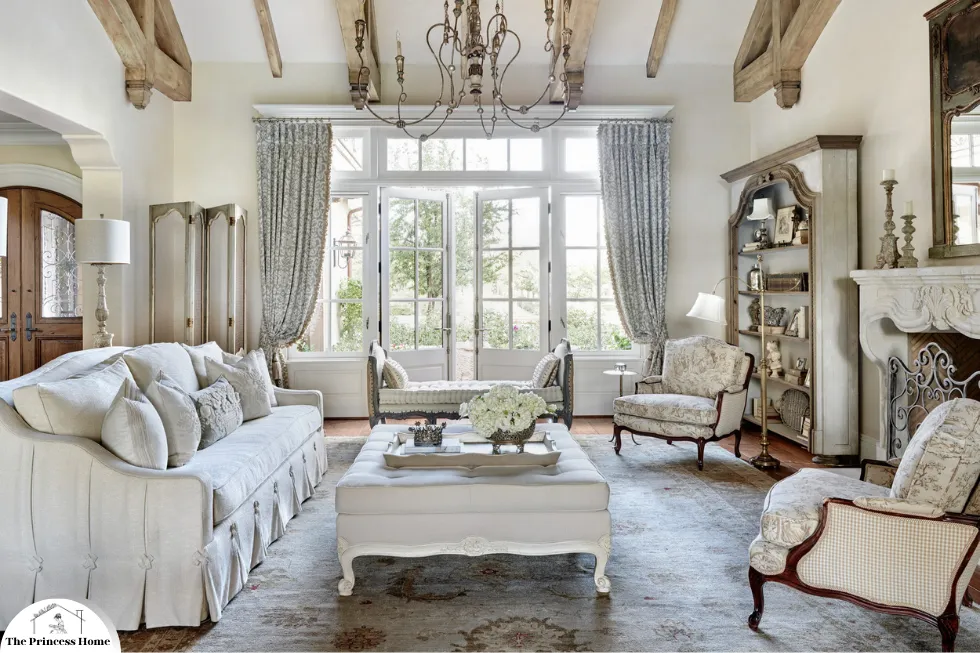
1*.Natural Materials:
The use of natural materials such as aged wood, stone, and clay forms the foundation of Provence style. Furniture crafted from weathered wood with a distressed finish exudes a sense of history and character, while stone accents add texture and warmth to the space. Natural materials play a fundamental role in defining the aesthetic of Provence style interiors.
Here’s a closer look at how these materials contribute to the overall ambiance:
1.Aged Wood:
Aged wood is quintessential in Provence style, often seen in furniture like dining tables, chairs, and cabinets. Its weathered appearance brings authenticity and warmth, evoking charming farmhouses or rustic cottages. Whether reclaimed barn wood, distressed oak, or whitewashed pine, aged wood’s unique patina adds depth and character to Provence interiors.
2.Stone:
Stone accents, such as exposed stone walls, fireplace surrounds, or flooring, are another hallmark of Provence style. brings a sense of solidity and permanence to the space, grounding it in its natural surroundings. Whether it’s rough-hewn limestone, smooth marble, or textured slate, stone adds visual interest and tactile appeal to Provence interiors while contributing to the overall sense of warmth and coziness.
3.Clay:
Clay is often used in Provence style interiors for decorative elements such as terracotta tiles, pottery, and earthenware vessels. These handmade clay pieces add a rustic charm and artisanal quality to the space, reflecting the craftsmanship and tradition of the region. Terracotta tiles, in particular, are a popular choice for flooring in Provence-style kitchens, bathrooms, and entryways, infusing the space with earthy tones and natural beauty.
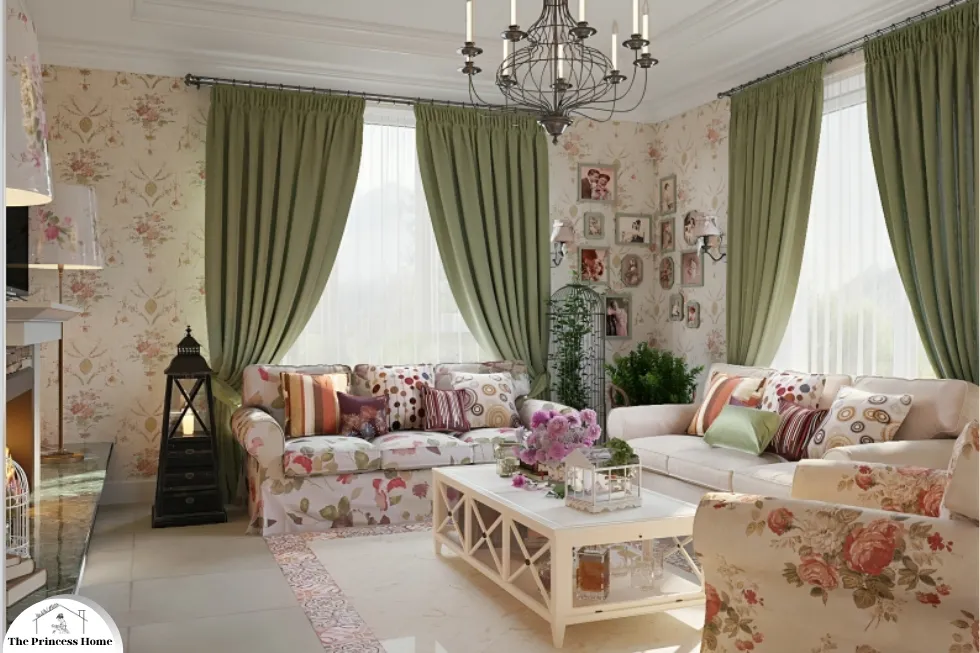
2.*Soft Color Palette:
Soft, muted colors dominate the Provence palette, echoing the hues of lavender fields, olive groves, and azure skies. Shades of lavender, sage green, soft blues, and creamy whites create a serene and inviting atmosphere, evoking the tranquility of the Provencal landscape. The soft color palette is a defining feature of Provence style, contributing to its serene and inviting ambiance.
Let’s explore how each hue captures the essence of the Provencal landscape:
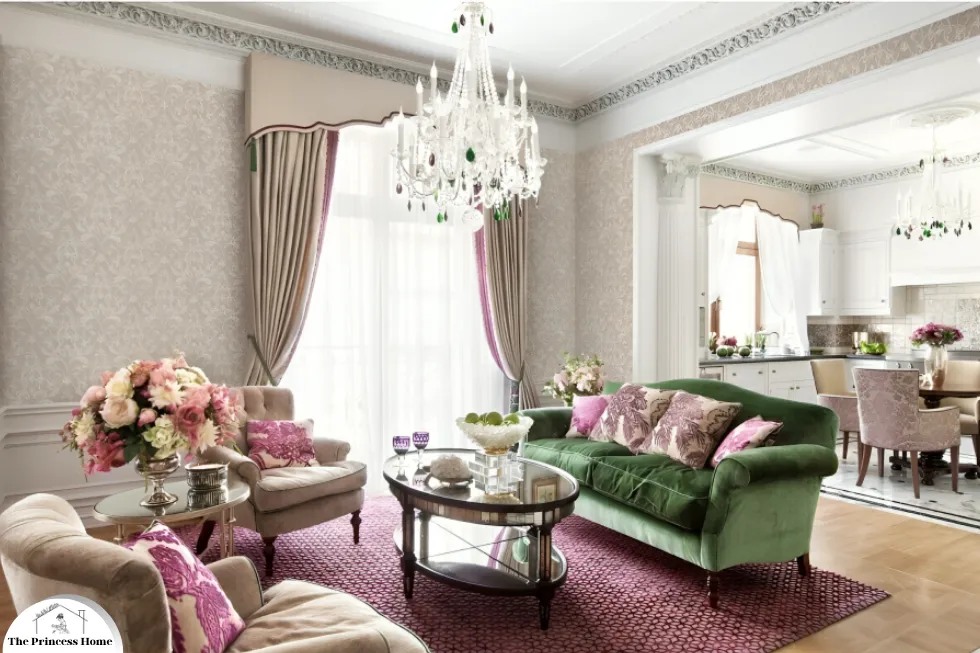
1.Lavender:
The delicate hue of lavender is reminiscent of the fragrant fields that blanket the Provencal countryside in summer. This soft purple shade adds a touch of romance and tranquility to Provence interiors, evoking the sensory experience of wandering through fields of blooming lavender.
2.Sage Green:
Sage green captures the verdant beauty of olive groves and vineyards that dot the Provencal landscape. This soft, muted green hue brings a sense of freshness and vitality to the space, while also imbuing it with a timeless elegance.
3.Soft Blues:
Soft blues, ranging from pale azure to muted periwinkle, reflect the endless skies that stretch over the Provencal horizon. These calming hues create a sense of openness and airiness, inviting the beauty of the outdoors into the interior while instilling a feeling of serenity and relaxation.
4.Creamy Whites:
Creamy whites, with their warm undertones, serve as the perfect backdrop for the soft colors of Provence style. They evoke the sun-drenched facades of Provencal villages and the whitewashed walls of centuries-old farmhouses, imparting a sense of lightness and purity to the space.
When combined, these soft, muted colors form a cohesive and harmonious palette that reflects the natural .

3*.Distressed Finishes:
Distressed finishes are a hallmark of Provence style, adding a touch of rustic elegance to furniture and decor. Chipped paint, faded finishes, and antique patinas evoke the passage of time, imbuing each piece with a sense of authenticity and charm.
Distressed finishes play a crucial role in defining the rustic elegance of Provence style interiors, adding depth, character, and a sense of history to furniture and decor.
Here’s how distressed finishes contribute to the overall aesthetic:
1.Chipped Paint:
Chipped paint is a characteristic feature of Provence-style furniture, evoking the weathered appearance of pieces that have stood the test of time. Whether it’s a vintage armoire, a farmhouse dining table, or a rustic bench, the worn edges and exposed layers of paint tell a story of years gone by, adding to the allure of the piece.
2.Faded Finishes:
Faded finishes mimic the effects of sun and weather exposure, creating a soft, timeworn patina that exudes a sense of warmth and nostalgia. Whether achieved through natural aging or deliberate distressing techniques, such as sanding or bleaching, faded finishes impart a sense of authenticity and charm to Provence-style furniture and decor.
3.Antique Patinas:
Antique patinas are another hallmark of Provence style, reflecting the rich history and heritage of the region. Whether it’s the warm glow of aged brass, the verdigris of weathered copper, or the mellowed sheen of aged wood, antique patinas add depth and character to furnishings and accents, imbuing them with a sense of timeless elegance and sophistication.
By incorporating distressed finishes into furniture and decor, Provence style interiors evoke a sense of rustic elegance and understated luxury. Each piece tells a story of its own, celebrating the beauty of imperfection and the passage of time.
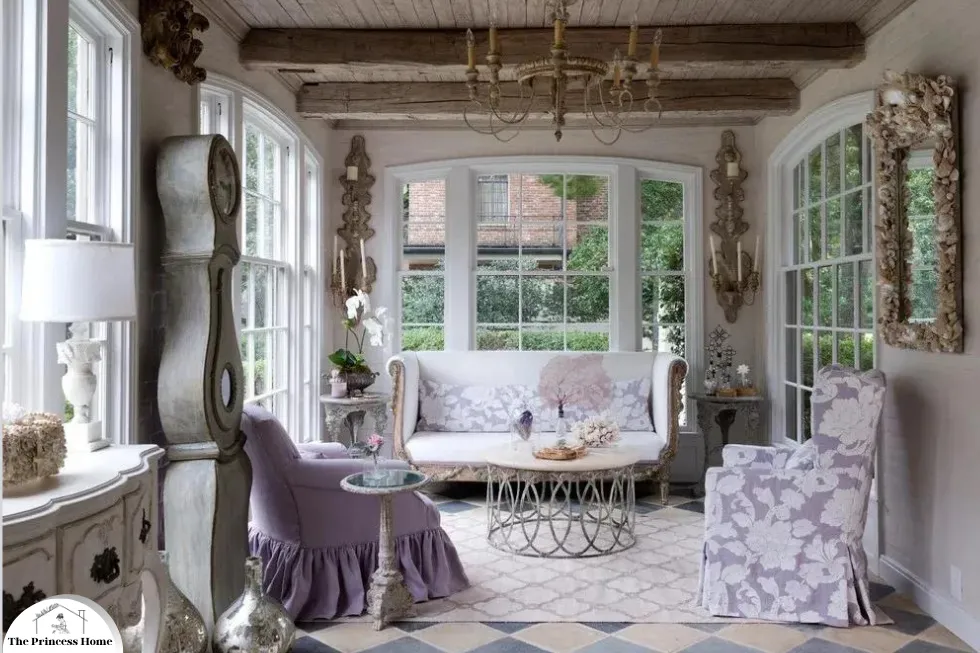
4*.Natural Textures:
Textiles play a pivotal role in Provence interiors, with an emphasis on natural fibers like linen, cotton, and hemp. Light and airy fabrics adorned with soft floral prints, ticking stripes, or simple checks infuse the space with warmth and comfort, while adding a layer of visual interest. Natural textures are integral to the cozy and inviting atmosphere of Provence style interiors, offering both tactile appeal and visual interest.
Here’s how the use of natural fibers and textiles enhances the charm of Provence interiors:
1.Linen:
Linen is a quintessential fabric in Provence style, prized for its softness, breathability, and timeless appeal. Whether used for curtains, upholstery, or bedding, linen adds a touch of luxury and sophistication to the space. Its natural texture and subtle variations in color create a relaxed and lived-in look, perfect for evoking the casual elegance of the French countryside.
2.Cotton:
Cotton is another staple textile in Provence interiors, valued for its durability, versatility, and comfort. Light and airy cotton fabrics, such as muslin, voile, and seersucker, drape beautifully and create a sense of effortless elegance. Whether in the form of crisp white curtains, cozy throw blankets, or delicate pillow covers, cotton textiles add a touch of freshness and refinement to Provence-style spaces.
3.Hemp:
Hemp is a sturdy and sustainable fiber that adds a rustic touch to Provence interiors. Whether used for area rugs, upholstery, or decorative accents, hemp textiles bring texture and character to the space. With its earthy tones and natural sheen, hemp complements the soft colors and organic aesthetic of Provence style, while also contributing to a sense of authenticity and eco-consciousness.
4.Soft Floral Prints:
Soft floral prints are a signature motif in Provence interiors, evoking the beauty of the natural world. Delicate flowers in muted shades of lavender, rose, and blue adorn curtains, bedding, and upholstery, infusing the space with a sense of romance and nostalgia. Whether in the form of dainty bouquets, trailing vines, or scattered petals, floral prints add a touch of whimsy and charm to Provence-style decor.
5.Ticking Stripes &Checks:
Ticking stripes and checks are classic patterns that lend a timeless appeal to Provence interiors. Inspired by traditional French textiles, these patterns are often used for upholstery, curtains, and table linens, adding a sense of rustic charm and casual elegance to the space. Whether in subtle neutrals or soft pastels, ticking stripes and checks create a sense of harmony and balance in Provence-style decor.

5*.Vintage Accents:
Provence style embraces vintage and antique furnishings, adding a sense of nostalgia and refinement to the space. Intricate carvings, graceful curves, and delicate details characterize these timeless pieces, lending a sense of history and elegance to the interior. Vintage accents are an essential component of Provence style, infusing spaces with charm, character, and a sense of history.
Here’s how the incorporation of vintage and antique furnishings enhances the allure of Provence interiors:
1.Nostalgia &Authenticity:
Vintage and antique furnishings evoke a sense of nostalgia, transporting occupants to a bygone era filled with elegance and grace. Whether it’s a weathered farmhouse table, a gracefully curved Louis XV armchair, or a rustic armoire with intricate carvings, each piece tells a story and adds depth to the interior, imbuing it with a sense of authenticity and character.
2.Timeless Elegance:
Vintage accents bring a timeless elegance to Provence interiors, with their classic silhouettes, refined craftsmanship, and enduring beauty. Whether sourced from flea markets, antique shops, or family heirlooms, these pieces add sophistication and refinement to the space, elevating it beyond mere decoration to create a truly memorable and enchanting environment.
3.Carvings &Delicate Details:
Vintage furnishings are often distinguished by their intricate carvings, graceful curves, and delicate details, which showcase the skill and artistry of the craftsmen who created them. Whether it’s a carved floral motif, a scrolled armrest, or a turned leg, these embellishments add a sense of luxury and opulence to Provence interiors, elevating them to a higher level of elegance and refinement.
4.Character &Personality:
Vintage accents inject personality and character into Provence interiors, reflecting the individual tastes and interests of the occupants. Whether it’s a collection of antique ceramics displayed on a mantel, a vintage chandelier hanging from the ceiling, or a distressed mirror adorning the wall, these unique and eclectic pieces add depth and interest to the space, creating a sense of warmth and intimacy that is both inviting and inspiring.
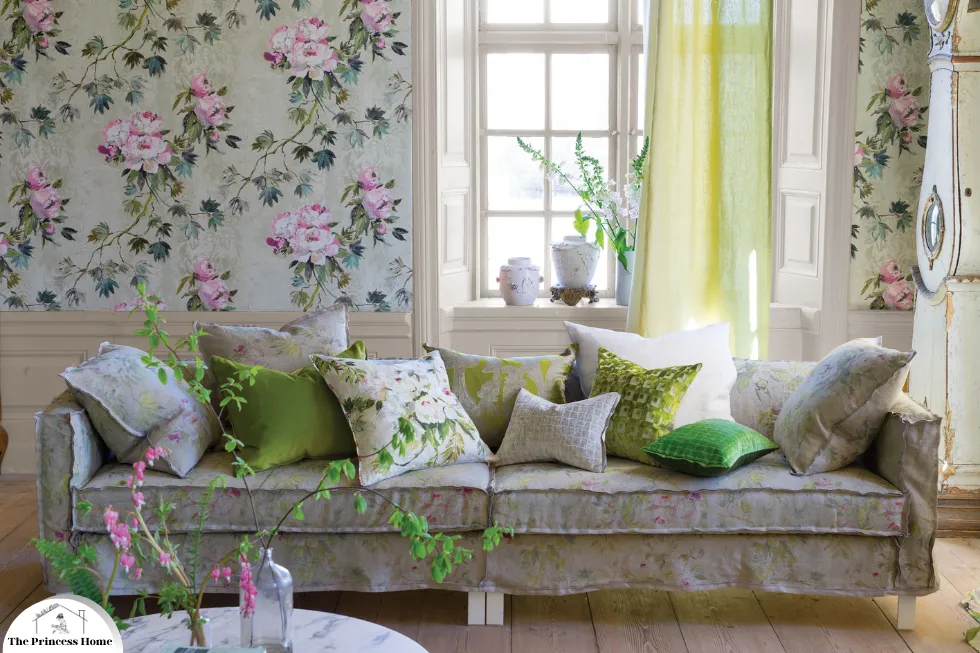
6*.Botanical Elements:
Inspired by the lush landscape of Provence, botanical elements such as fresh flowers, herbs, and botanical prints are often incorporated into Provence interiors. These natural accents bring a breath of fresh air into the home, connecting the interior with the beauty of the outdoors. Botanical elements are essential to capturing the essence of Provence style, infusing interiors with a sense of freshness, vitality, and connection to nature.
Here’s how the incorporation of botanical elements enhances the beauty of Provence interiors:
1.Fresh Flowers:
Fresh flowers are a hallmark of Provence style, bringing vibrant colors, delicate fragrances, and a touch of elegance to interiors. Whether it’s a bouquet of lavender, a vase of sunflowers, or a bunch of wildflowers gathered from the garden, fresh flowers enliven the space and create a sense of natural beauty and abundance.
2.Herbs:
Herbs are not only prized for their culinary uses but also valued for their aromatic and decorative qualities in Provence interiors. Whether grown in pots on the windowsill, hung in bunches to dry, or incorporated into floral arrangements, herbs such as lavender, rosemary, and thyme infuse the space with their fragrant scents and lush greenery, evoking the sensory delights of the Provencal landscape.
3.Botanical Prints:
Botanical prints are a timeless and elegant addition to Provence interiors, showcasing the beauty and diversity of the natural world. Whether in the form of framed artwork, wallpaper, or fabric, botanical prints feature botanical illustrations of flowers, leaves, and plants, adding a sense of charm, sophistication, and whimsy to the space.
4.Natural Accents:
In addition to fresh flowers, herbs, and botanical prints, Provence interiors often incorporate natural accents such as woven baskets, terracotta pots, and wooden crates, further enhancing the connection to the outdoors. These natural textures and materials add warmth, texture, and authenticity to the space, creating a harmonious and inviting environment that celebrates the beauty of nature After taking an overview of Florence’s décor, here are some tips for incorporating Provence style into your home
Incorporating Provence style into your home can be a delightful endeavor, whether you’re starting from scratch or seeking to infuse existing spaces with French flair.
Here are some tips to help you achieve the quintessential Provence look:

1.*Embrace Natural Materials:
Choose furniture and decor crafted from natural materials such as wood, stone, and rattan. Opt for pieces with a weathered finish or distressed patina to enhance the rustic charm of the space. In Provence style, the use of natural materials is fundamental to creating a warm and inviting atmosphere that reflects the rustic elegance of the French countryside.
Here’s how to incorporate natural materials into your Provence-style interior:
1.Wood:
Select furniture crafted from aged or reclaimed wood to add a sense of history and character to your space. Look for pieces with a weathered finish or distressed patina, which enhance the rustic charm of Provence style. Whether it’s a farmhouse dining table, a vintage chest of drawers, or a set of rustic chairs, wood brings warmth and authenticity to the interior.
2.Stone:
Introduce stone accents to add texture and visual interest to your Provence-style interior. Consider incorporating elements such as exposed stone walls, fireplace surrounds, or flooring made from natural stone tiles. The rugged beauty of stone evokes the timeless appeal of Provence architecture, creating a sense of solidity and permanence in the space.
3.Rattan:
Incorporate rattan furniture and decor to add a touch of casual elegance to your Provence-style interior. Rattan chairs, baskets, and light fixtures bring a relaxed and airy vibe to the space, complementing the natural beauty of wood and stone. Opt for pieces with organic shapes and woven textures to enhance the laid-back charm of Provence style.
4.Weathered Finish:
Embrace the beauty of imperfection by choosing furniture and decor with a weathered finish. Look for pieces that show signs of age, such as chipped paint, worn edges, or faded colors. These subtle imperfections add depth and character to your Provence-style interior, evoking the patina of time and the lived-in charm of a country cottage.
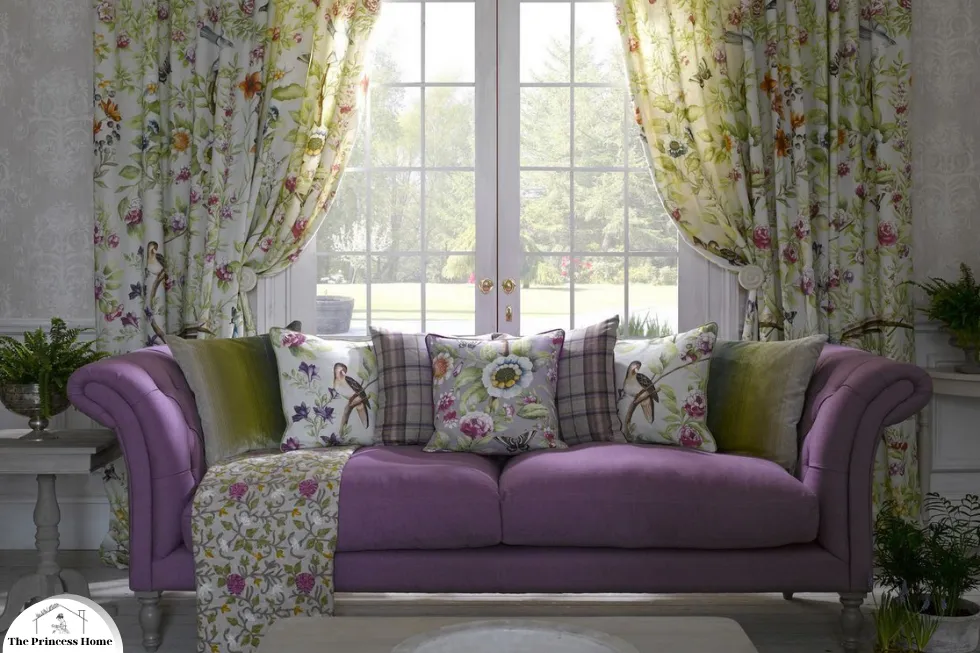
2*.Soft Color Palette:
Stick to a soft, muted color palette inspired by the Provencal landscape. Incorporate shades of lavender, sage green, soft blues, and creamy whites throughout the interior to create a cohesive and tranquil atmosphere. In Provence style, the soft color palette plays a crucial role in evoking the serene beauty of the Provencal landscape and creating a tranquil atmosphere.
Here’s how to incorporate a soft, muted color palette into your Provence-style interior:
1.Lavender:
Use shades of lavender to infuse your space with a sense of calm and relaxation. Lavender, with its delicate purple hues, echoes the fragrant fields of Provence in full bloom. Incorporate lavender tones through accent walls, upholstery fabrics, decorative pillows, and accessories to add a touch of romance and elegance to your interior.
2.Sage Green:
Bring the verdant beauty of Provence’s olive groves indoors by incorporating shades of sage green into your color palette. Sage green, with its soft and subtle tones, creates a sense of freshness and vitality in the space. Use it on walls, upholstered furniture, and decorative accents to add a natural, earthy element to your Provence-style interior.
3.Soft Blues:
Capture the endless skies and shimmering waters of Provence with soft blue hues. Soft blues, ranging from pale azure to muted periwinkle, evoke a sense of tranquility and serenity. Use them on walls, curtains, bedding, and accessories to create a calming and soothing atmosphere reminiscent of a sunny day in the French countryside.
4.Creamy Whites:
Anchor your Provence-style interior with creamy whites, which serve as a versatile backdrop for the rest of your color palette. Creamy whites, with their warm undertones, create a sense of lightness and purity in the space. Use them on walls, ceilings, trim, and furnishings to enhance the overall brightness and airiness of your interior.

3*.Layer Textiles:
Layer textiles to add warmth and texture to the space. Use lightweight fabrics like linen and cotton for curtains, upholstery, and bedding, and accessorize with soft throws and pillows in complementary colors and patterns. Layering textiles is a key element of Provence style, adding depth, warmth, and visual interest to the space.
Here’s how to effectively layer textiles in your Provence-style interior:
1.Lightweight Fabrics:
Opt for lightweight fabrics such as linen and cotton for curtains, upholstery, and bedding. These natural fibers have a soft and breathable quality that enhances the comfort and coziness of the space. Choose curtains in sheer linen or cotton voile to allow natural light to filter through, creating a bright and airy atmosphere. For upholstery, consider slipcovers in washed cotton or linen for a relaxed and casual look. And for bedding, use crisp cotton sheets and lightweight linen duvet covers to create a comfortable and inviting sleeping environment.
2.Soft Throws:
Incorporate soft throws in complementary colors and textures to enhance the warmth and comfort of your Provence-style interior. Drape a lightweight linen throw over furniture for a cozy reading spot, or layer a chunky knit throw on the bed for added warmth. Opt for muted colors like sage green or creamy white to complement your palette and create a cohesive look.
3.Pillows:
Accessorize with an array of soft pillows in diverse colors, patterns, and textures to infuse personality into your Provence-style space. Mix floral prints, ticking stripes, and checks for a layered effect. Opt for natural fabrics like linen and cotton for a cozy touch, and play with different sizes and shapes for visual interest.
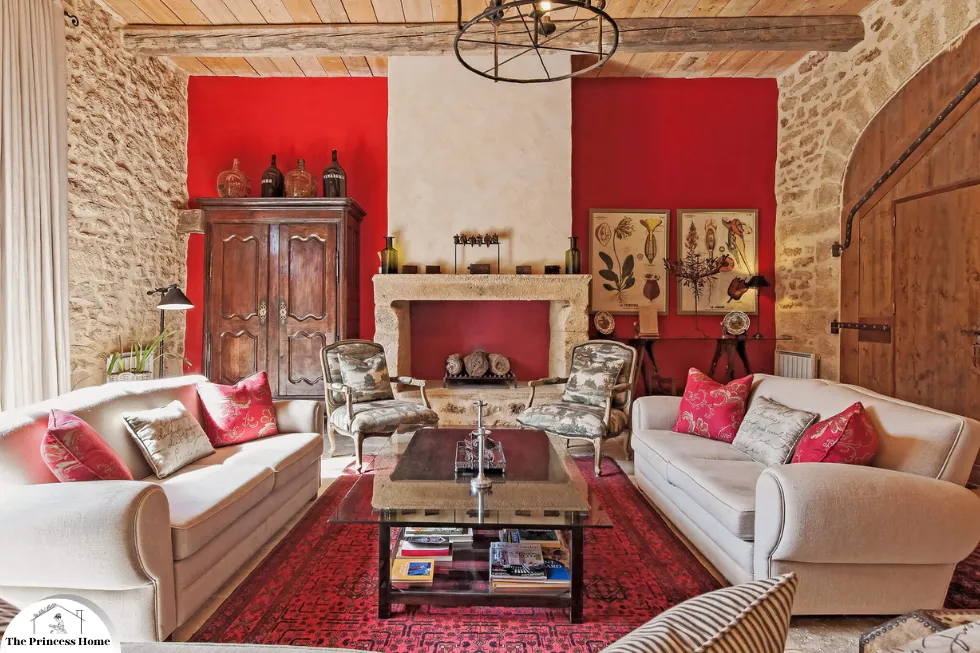
4*.Mix Old and New:
Blend vintage and antique furnishings with modern elements to create a balanced and eclectic look. Pair a rustic farmhouse table with contemporary dining chairs, or display a collection of vintage ceramics alongside sleek glass vases. In Provence style, blending old and new elements is a hallmark of creating a dynamic and visually engaging interior.
Here’s how to effectively mix vintage and antique furnishings with modern elements in your Provence-style space:
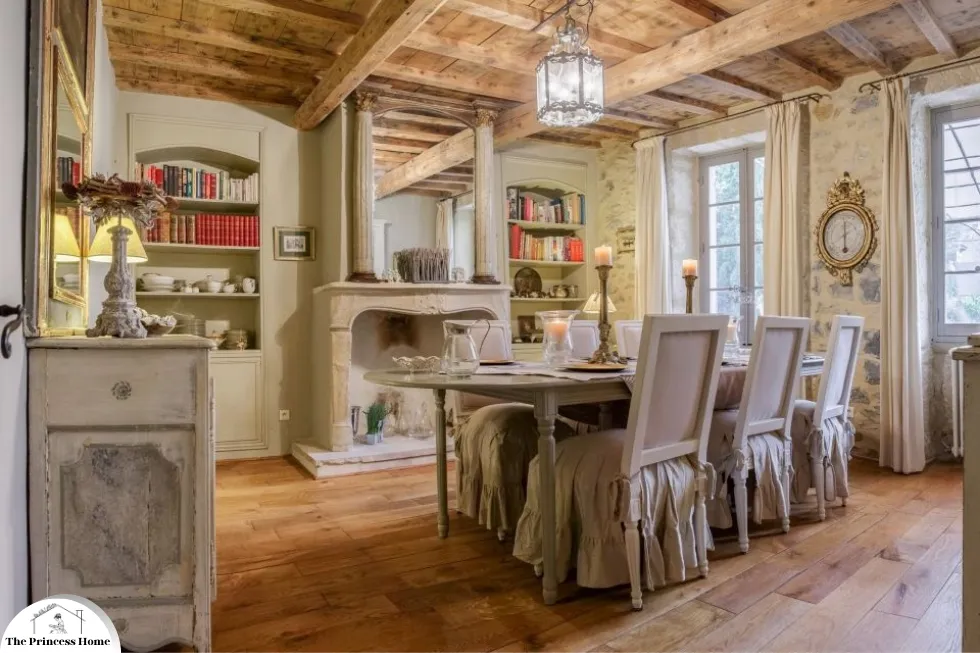
1.Rustic Table &Contemporary Chairs:
Create contrast and interest in your dining area by pairing a rustic farmhouse table with contemporary dining chairs. The juxtaposition of old and new adds depth and character to the space, while also allowing you to showcase your personal style. Look for a farmhouse table with weathered wood and distressed finishes to evoke the charm of Provence, and complement it with sleek and streamlined dining chairs in a modern material such as metal or acrylic. This combination creates a balanced and eclectic look that is both inviting and stylish.
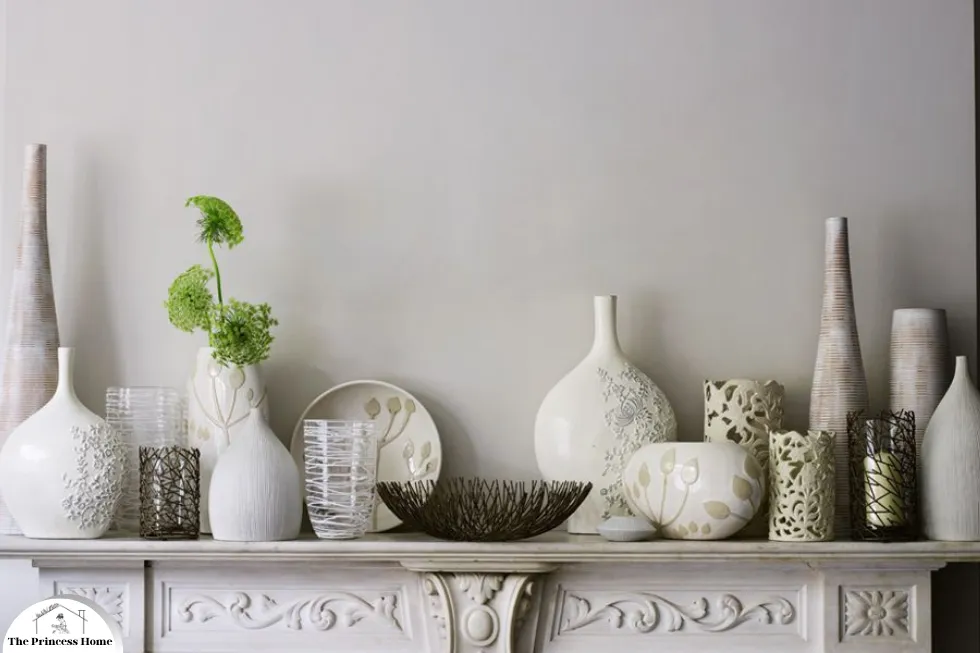
2.Vintage Vases & Sleek Glass:
Add a touch of vintage charm to your Provence-style interior by displaying a collection of vintage ceramics alongside sleek glass vases. Arrange vintage pitchers, bowls, and pottery on open shelves or countertops to create visual interest and showcase your unique finds. Pair them with modern glass vases filled with fresh flowers or greenery to add a contemporary twist and create a harmonious balance between old and new. This juxtaposition of textures and materials creates a dynamic and eclectic display that adds personality and warmth to your space.

3.Focus on Simplicity:
Keep the overall aesthetic of the space simple and uncluttered. Choose furniture with clean lines and classic silhouettes, and opt for a few well-chosen accessories to add interest without overwhelming the room. Embracing simplicity is key to capturing the understated elegance and timeless charm of Provence style.

5*Mountain Provence Style:
For a mountain-inspired take on Provence style, focus on cozy textures, rustic elements, and colors inspired by mountain landscapes. Think exposed wood beams, stone accents, and plush textiles like faux fur or knits for warmth. Use earthy browns, deep greens, and slate blues, and add botanical accents and vintage finds for Provencal charm.
Conclusion:
Provence style interior design offers a delightful fusion of rustic charm, timeless elegance, and relaxed sophistication.
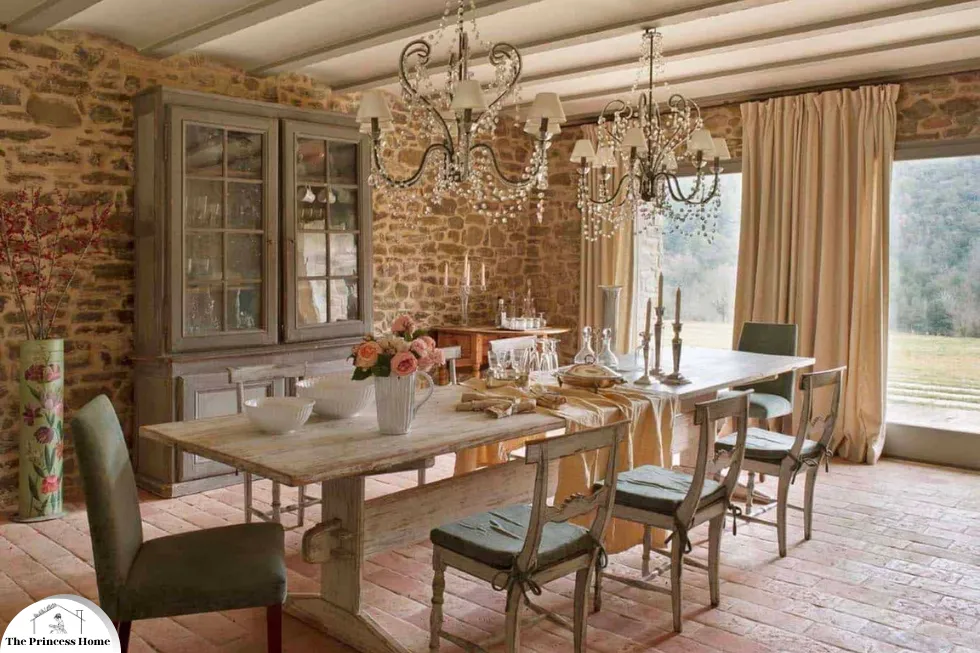


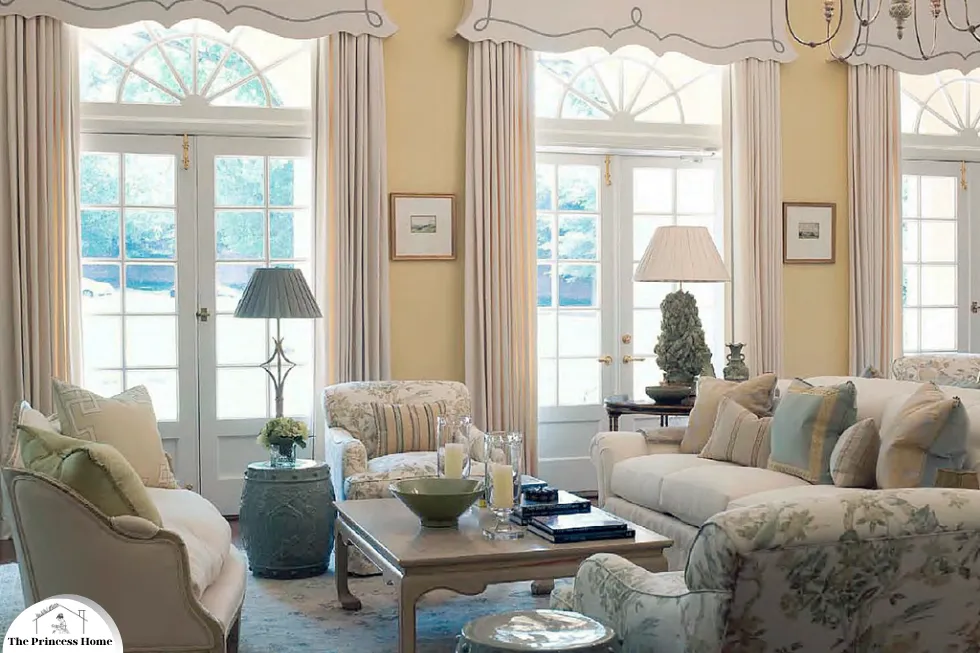
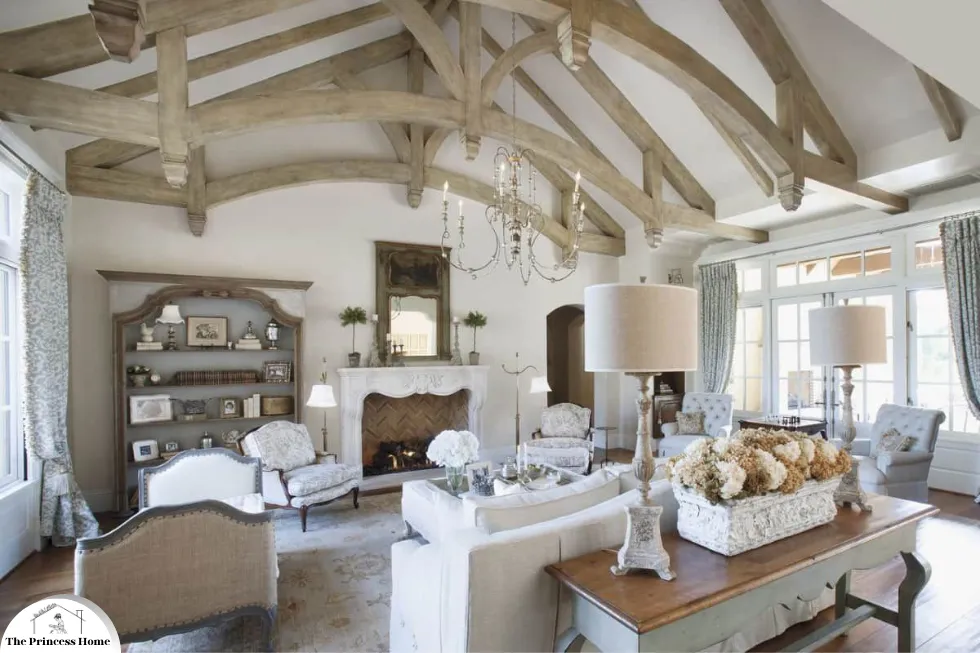
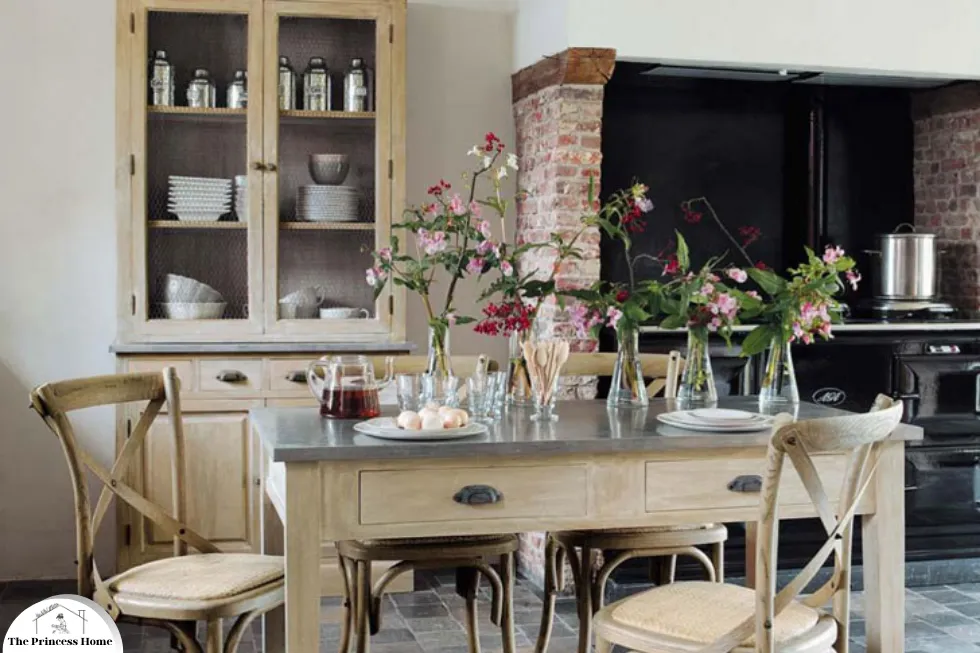




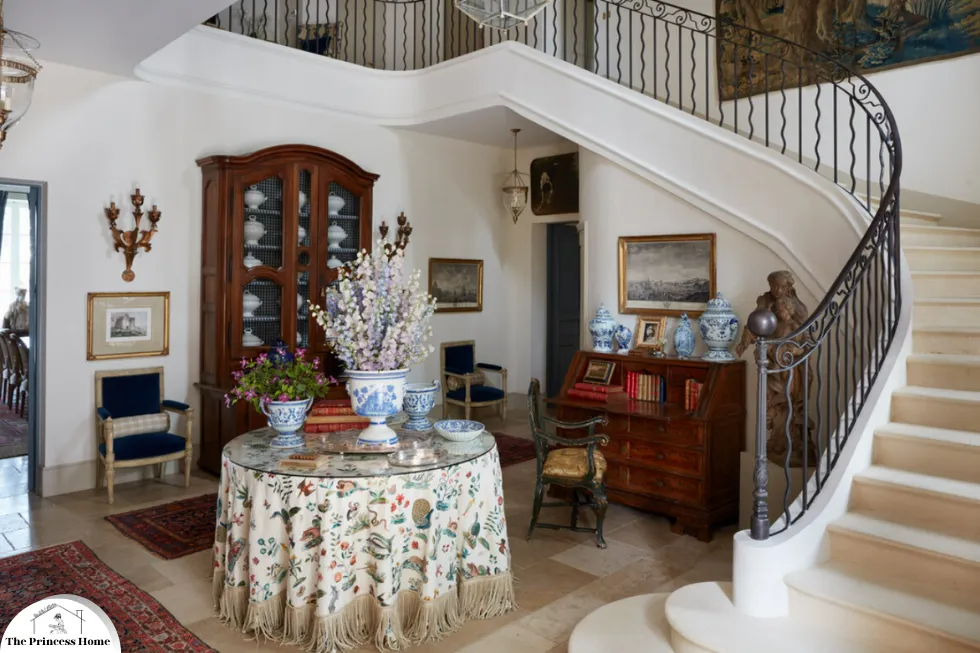

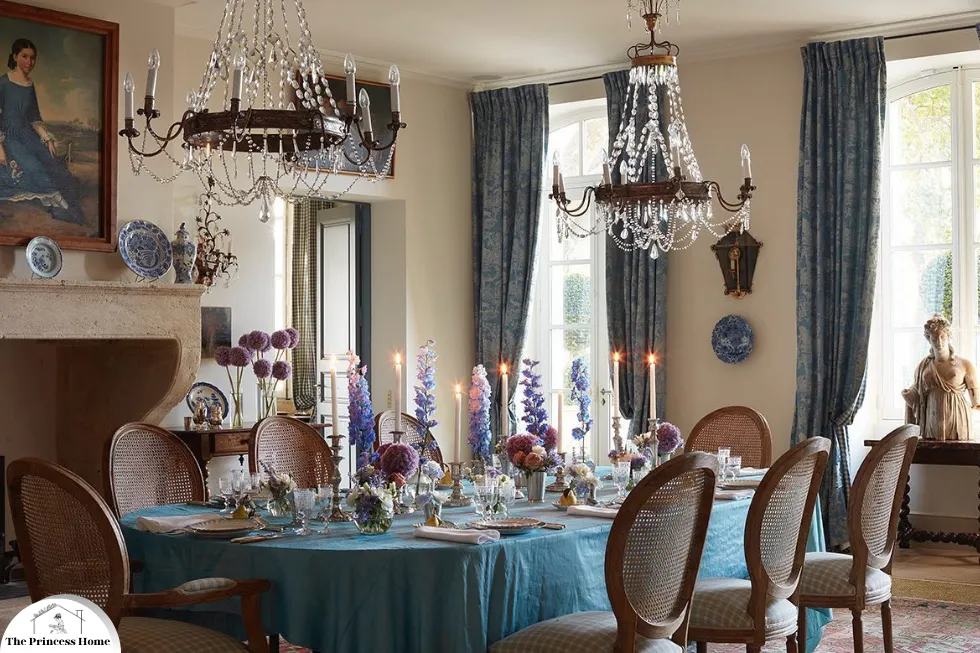

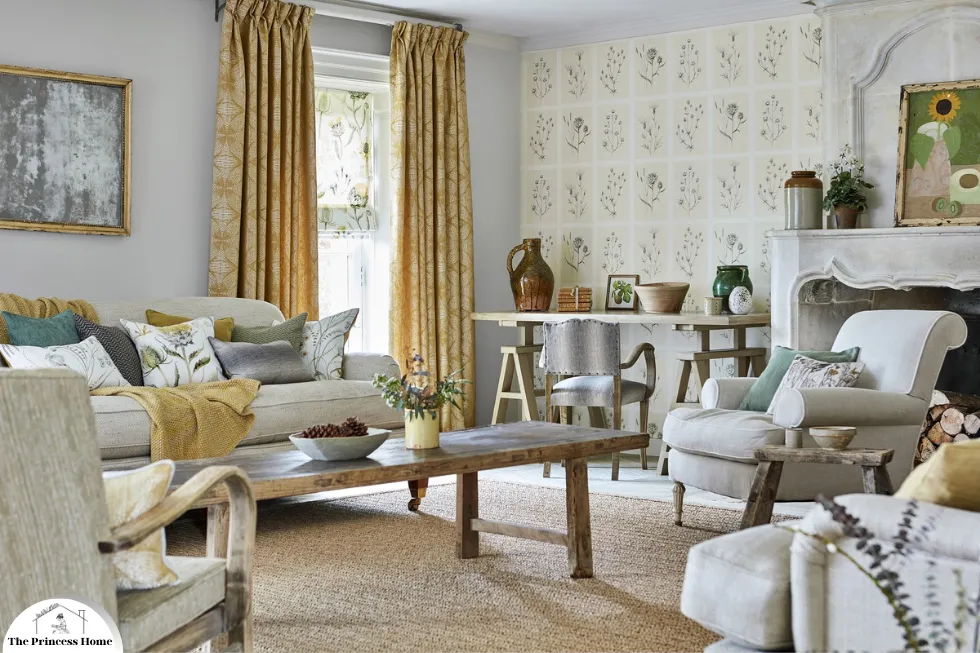

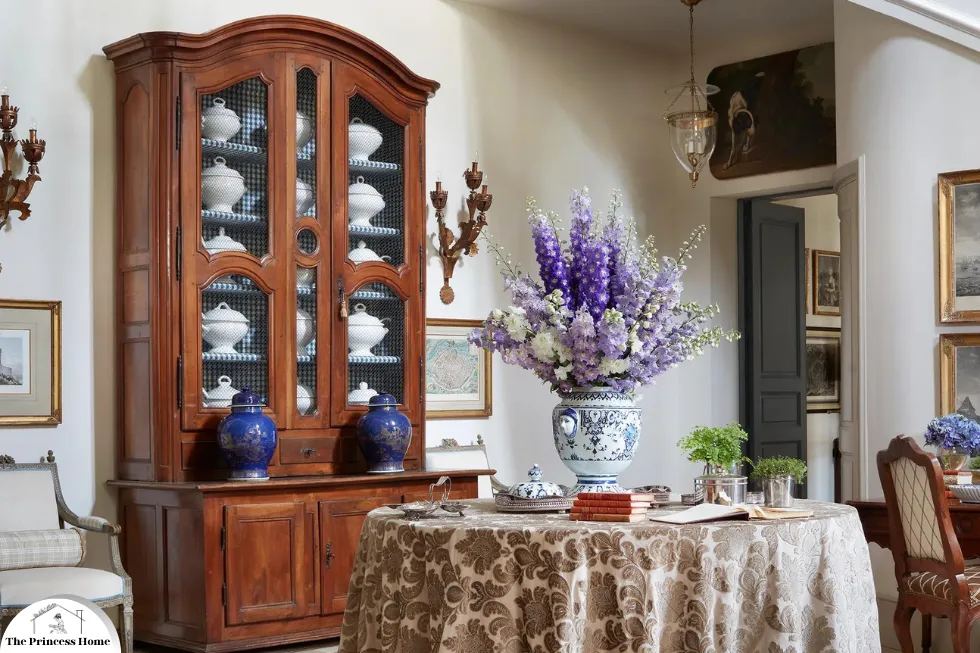
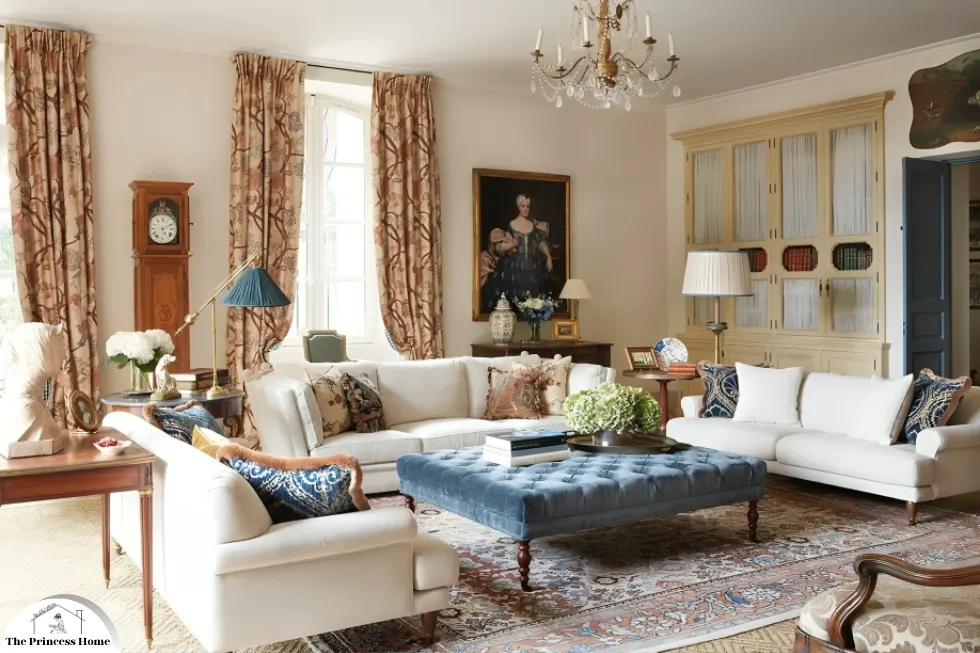
Here are some frequently asked questions related to Provence style along with their answers:
1.What are some tips for incorporating Provence style into a modern home?
You can incorporate Provence style into a modern home by focusing on key elements such as natural materials, soft color palettes, and vintage accents. Mix rustic furniture with sleek, contemporary pieces for a balanced look. Consider adding botanical elements and textiles with classic French patterns to evoke the charm of the French countryside.
2.How can I achieve a Provence-style look on a budget?
Achieving a Provence-style look on a budget is possible by focusing on DIY projects, thrift shopping, and repurposing existing furniture. Look for affordable pieces made from natural materials such as wood and rattan. Use paint to distress furniture and create a weathered finish, and incorporate inexpensive textiles like linen and cotton for a soft, rustic feel.
3.What are some common mistakes to avoid when decorating in Provence style?
Common mistakes to avoid when decorating in Provence style include over-cluttering the space with too many vintage accents, using overly bright or garish colors, and neglecting to balance rustic elements with modern touches. It’s important to maintain a sense of simplicity and elegance while incorporating Provence-inspired decor.
4.Can Provence style be adapted for smaller living spaces?
Yes, Provence style can be adapted for smaller living spaces by focusing on light colors, maximizing natural light, and incorporating multifunctional furniture pieces. Choose smaller-scale vintage accents and avoid overcrowding the space with too many decorative items. Consider using mirrors to create the illusion of more space and opt for furniture with built-in storage solutions.
5.What are some alternative color palettes for Provence style?
Consider warm neutrals like beige and taupe, or earthy tones such as terracotta and olive green as alternatives to the typical soft, muted colors of Provence style. These hues still capture the essence of the French countryside while offering a fresh perspective on traditional Provence aesthetics.
Free Interior Design Course: Learn the Skills to Design Your Home


